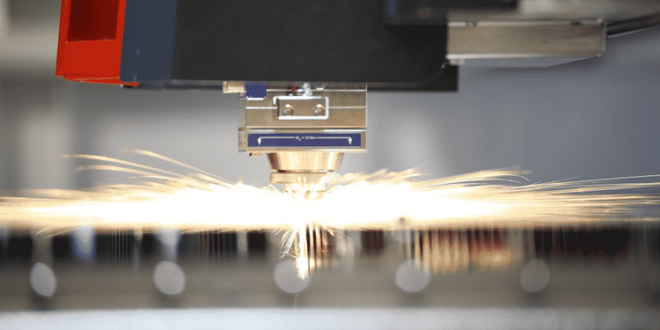Laser cutting has become a popular option due to its growing usage. While this type of cutting has been around since the 60s, many people have started using it as an alternative to conventional cutting methods just recently. This form of cutting has a range of options and techniques. The three main forms of lasers for cutting include C02 lasers, fiber lasers, and vanadate crystal lasers.
To help you know about each type of laser, we have created this ultimate guide on the three common forms of lasers for cutting.
What is Laser Cutting?
Before we get into the three main forms of laser for cutting, it would be best to understand what laser cutting is. This technology uses a laser beam to cut various materials. During the process, the laser beam will be focused on the material using optics and CNC. It will melt the localized area material before a co-axial gas jet is used to remove the material.
1. C02 Lasers
Also known as gas lasers, C02 laser cutting works by passing electric current through a tube. The tube is filled with a gas mixture of nitrogen, hydrogen, carbon dioxide, and helium. It also has mirrors on both ends. The first mirror is fully reflective, while the other mirror is partially reflective and lets some of the light through. When the electric current passes through the tube, it will produce light beams.
Since C02 lasers produce high power levels and are relatively cheap, they are commonly used in various industrial applications, including welding and cutting. Low-level lasers are ideal for engraving and the SLS. Selective laser sintering, commonly known as SLS, refers to an additive manufacturing process that uses a laser to sinter powdered material.
Moreover, gas lasers have become a popular option for soft-tissue surgery. This form of laser cutting is ideal for soft-tissue surgery since the tissues absorb the beam of light quickly. Laser surgery and laser facelifts are the two common uses of this form of laser cutting. Dermatologists are also turning to these lasers to deal with various skin conditions, including, Hirsuties papillaris genitalis. These lasers are also suitable for military range finding and LIDAR techniques.
2. Crystal Lasers
This form of laser cutting utilizes nd:YAG lasers and nd:YVO lasers. It is also known as neodymium-doped yttrium aluminum garnet, nd:YAG is a crystalline material that belongs to the garnet group. Since it cannot be used while pure, it is doped with an appropriate ion. On the other hand, nd:YVO or neodymium-doped yttrium ortho-vanadate also belongs to the garnet group and is doped before used. These forms of laser cutting techniques can be used for high-powered cutting. Crystal lasers can be used to cut both metal and non-metals.
These lasers can also be used for other applications, including military, manufacturing, dentistry, and medical. It is important to note that nd:YVO has a higher pump absorption rate, lower thermal conductivity, and a broader wavelength than nd:YAG.
3. Fiber Lasers
Fiber laser cutting machine has grown in popularity due to the wide range of benefits they offer. These lasers use optical fiber as the active gain mediums. Since optical fiber cannot function independently, it is usually doped with hard-to-find earth elements, including praseodymium, thulium, erbium, ytterbium, dysprosium, and neodymium.
Fiber lasers are similar to crystal lasers since they also have a wavelength of about 1.064 micrometers. Moreover, these lasers also part of the solid-state group. This form of laser for cutting has the edge over the other cutting methods for various reasons. Keep on reading to discover why fiber lasers are preferred over other cutting methods:
What are the Advantages of Fiber Lasers over Other Types of Lasers?
One advantage of these lasers over the other forms of lasers is that they are easy to use. You can easily deliver the light to the material when cutting, folding, and welding different applications like polymers and metals.
Moreover, fiber lasers produce high output power than the other lasers. This means they provide a high optical gain. This form of laser for cutting also has a low cost of ownership and provides higher cutting speeds and cleaner cut edges. The lasers can be used in a wide range of applications, including medicine, telecommunications, the manufacture of directed energy weapons, and spectroscopy.
Are you looking for high-quality fiber lasers? Please stop by JPT now to learn more about lasers for cutting.
 HammBurg Be informed with latest news, reviews, entertainment, lifestyle tips, and much more.
HammBurg Be informed with latest news, reviews, entertainment, lifestyle tips, and much more.




